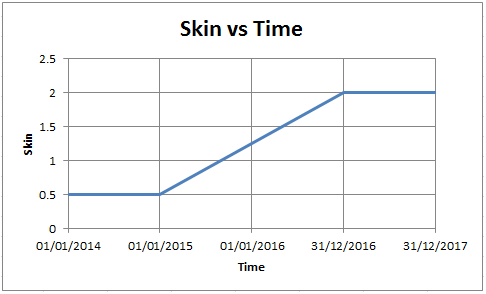Time-dependent skin accounts for wellbore skin changes with time, which can include a wide range of near-wellbore phenomena in production data, or pressure transient analysis. Some of these phenomena include:
- Pressure-dependent permeability (can also be handled explicitly using the modified pseudo-pressure method)
- Fracture closure over time
- Migration of fines through a fracture
- Condensate drop-out near the well
- Scale / wax deposition near perforations
- Well cleanup (decreasing skin damage)
- Gradual loss of formation integrity near the wellbore
The processes occurring during these phenomena may be very complex and difficult to model analytically. The changing skin model is a suitable approximation because it "lumps" all the contributors of pressure loss into a single term, occurring at a discrete point (and thus, it is independent of the geometrical or fluid-flow complexities).
Time-dependent skin should be thought of as a "tuning parameter" during the history-matching phase of numerical modeling. It is designed to be a catch-all for any changing fluid or reservoir property over time that is not accommodated by the analytical model. In order to obtain a unique result, a simultaneous match on flowing and shut-in pressures is almost always required. In other words, flowing data on its own rarely shows a clear trend of changing well productivity (especially, if it is a decreasing damage over time). This is because the effect is usually masked by depletion. However, if shut-in pressures are used in conjunction with flowing data, the changing productivity can be clearly identified, as no "static" reservoir model is able to honor both datasets.
The time-dependent skin has the following inputs:
- s or sf (skin, or damage skin on fracture face) = the starting value of skin
- tsds (skin damage start date) = the start date of changing skin
- tsde (skin damage end date) = the end date of changing skin
- slim (skin damage limit) = the limit of changing skin (on and after the end date of changing skin)
For example, if the skin is initially 0.5, and the skin increases on tsds = 01/01/2015 linearly to slim = 2 on 31/12/2016, and then the skin remains at 2, the numerical simulator takes into account such skin change as a function of time.
